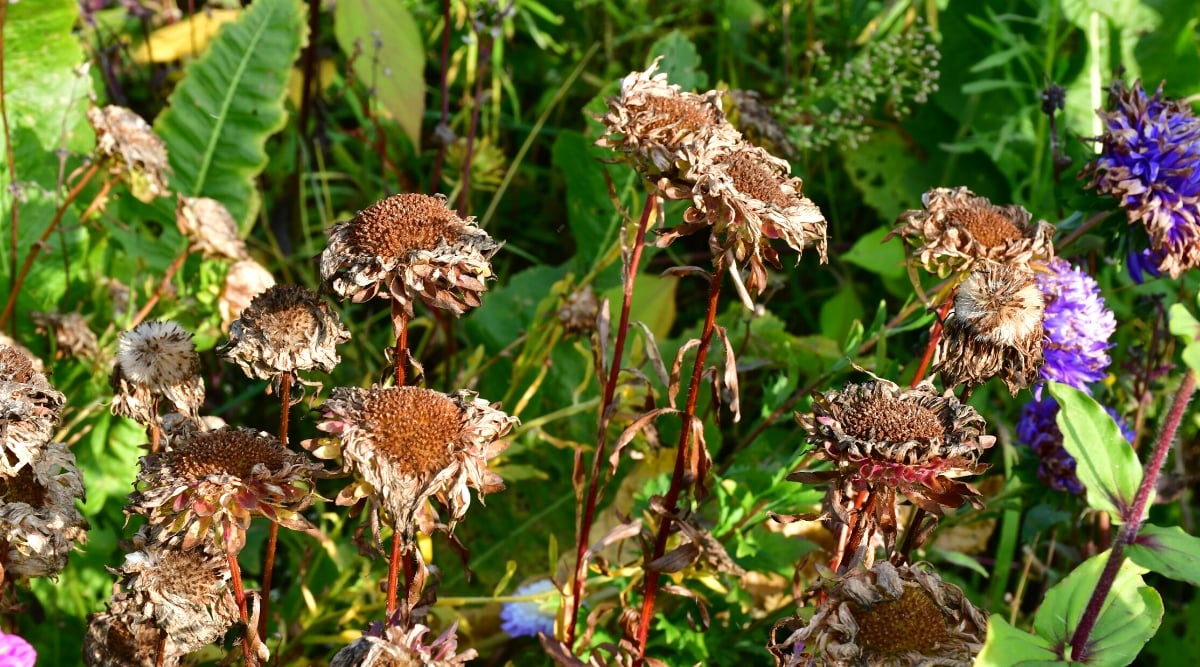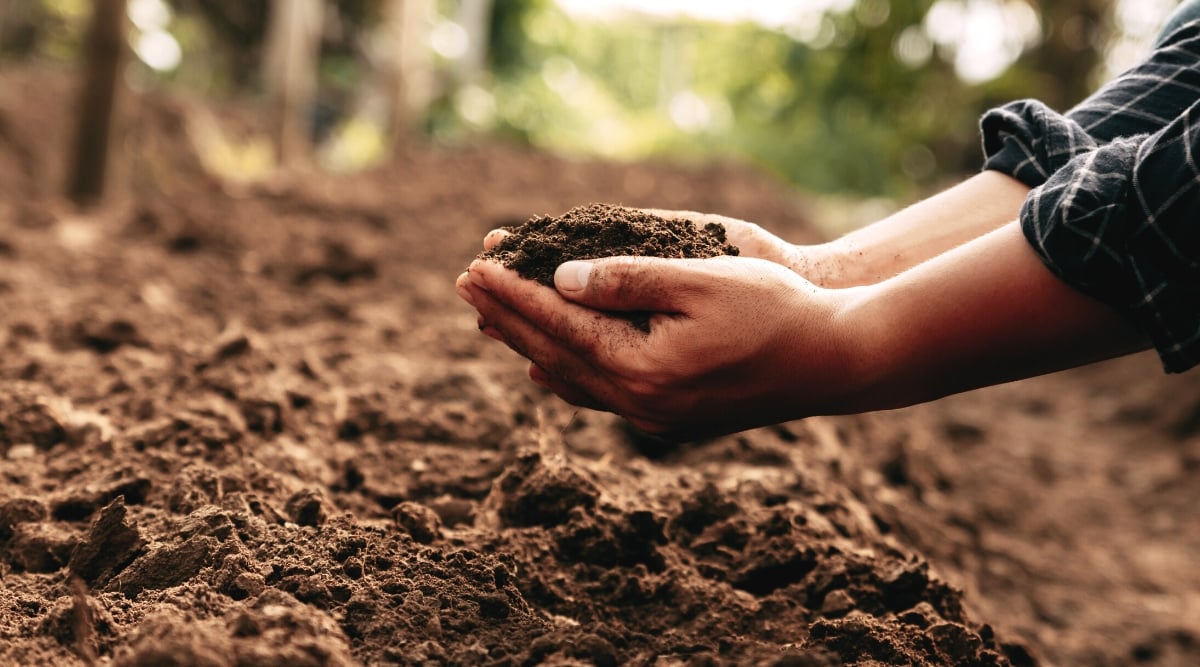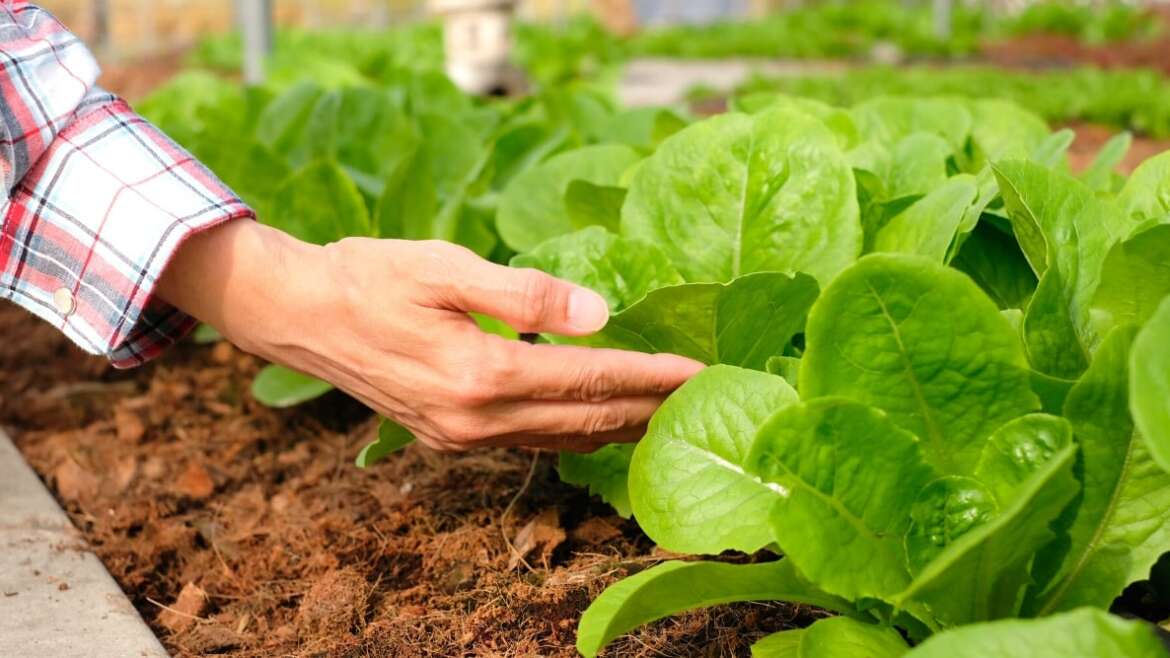As we enter the dog days of summer, gardening can really take a lot out of a person. However, if you find a cool evening that you can spend cleaning up in the garden, it will pay off later.
Preparing your fall garden is different from the heavy lifting needed to prepare for winter, and it’s much less labor-intensive than spring planting. Still, some crucial tasks will give your garden a boost to finish the summer and transition into fall.
Here are 15 tasks you can do to nurture your end-of-summer garden and prepare your plants for a fabulous autumn show.
Take a Long Look Around
Evaluate the garden, relocate plants, address pests and diseases, and create a plan.
Before making any major decisions, take a good, long look around the garden and assess the condition of your plants. Consider which plants are thriving in their space and which ones might be prime for moving to a new location. Some things will be ok to move, while others should stay put until spring.
Look for signs of pest infestation or disease. Take action to treat and prevent future pests or pathogens from invading the garden.
Identify which plants are outgrowing their space and need to be divided, transplanted, or pruned. Take stock of what is left and what needs to be done to make a plan.
Harvest Summer Vegetables
 As warm-weather vegetables slow down, harvest remaining crops and properly dispose of plants.
As warm-weather vegetables slow down, harvest remaining crops and properly dispose of plants.
This is when warm-weather vegetables are slowing down in their production and will soon be ready to be replaced with fall vegetables. You might have some beans ready to pick or a few ripe tomatoes still on the vine. Corn is just about ready to harvest, and it’s time to pickle some okra and pull out that famous squash casserole recipe.
If these plants are finished producing, go ahead and pull them out. Most of these plants can be thrown into the compost pile. Be careful about very acidic vegetables like tomatoes and citrus. These can be hard on the compost cycle if too many are added.
Weed Thoroughly
 During summer, prioritize weeding the garden to prevent resource competition, root choking, and pest infestation.
During summer, prioritize weeding the garden to prevent resource competition, root choking, and pest infestation.
Summer is the prime season for weeds to sprout up all over the garden. As the summer wears on, giving your garden a thorough weeding is a good idea. This is not many gardeners’ favorite task, but it is essential for several reasons:
- Weeds use up valuable water and nutrients that would otherwise be available to your crops.
- Weeds can choke the roots of crops, making it more difficult for them to grow and uptake enough nutrients and water.
- Weeds can bring unwanted pests to the garden, where they can wreak havoc.
- Weeds can cause a garden to become congested, leaving it vulnerable to fungus and bacteria.
It’s a good idea to do a substantial weeding in your garden beds before the fall to clear the way for seasonal plants and maintain the overall health of the garden. If you hate pulling weeds out on your hands and knees, these weeding tools are perfect for removing weeds more efficiently.
Deadhead
 Combine garden assessment with deadheading summer-blooming perennials to promote new growth.
Combine garden assessment with deadheading summer-blooming perennials to promote new growth.
It’s time to deadhead all of your summer-blooming perennials. You can combine this task with your walk around to take stock of the garden’s condition. If this is not a practice that you have made a habit of throughout the year, now is a great time to get out there and remove the dead weight.
Deadheading can encourage your plants to produce more flowers, prolonging the bloom time of summer bloomers. It is an essential task in growing healthier plants with more blooms.
Deadheading is not just for aesthetic reasons, but it makes the garden look nicer. It is a valuable way to encourage plants to redirect their energy to new growth. Some plants drop their flowers independently, but many plants need a little help.
Use your fingers to pinch more tender stems and a clean pair of hand shears to trim blooms off of woody stems.
Remove Spent Annuals and Make Divisions
 Dig up spent bulbs for overwintering or division, ensuring plants are acclimated before winter.
Dig up spent bulbs for overwintering or division, ensuring plants are acclimated before winter.
If you planted annuals in the spring, there is a good chance that by the time summer draws to a close, you will have some that have run their course and no longer look nice. Once your annual plants have finished blooming, you can remove them from the garden to make room for fall flowering annuals.
Removing these plants increases airflow in the garden and eliminates dying foliage that may be playing host to fungus or garden pests. Check these plants for pests and diseases before adding them to the compost pile.
This is also a good time to dig up bulbs that are spent and need to be overwintered indoors or need to be divided. This includes any bulb plants that are not hardy in your zone.
If you need to do any divisions of plants that overwinter outdoors, this is a prime time to do that as well so that they can get acclimated for winter in their new locations before the cold weather descends.
Take Cuttings
 Take cuttings now for spring propagation, considering overwintering options for different plant types.
Take cuttings now for spring propagation, considering overwintering options for different plant types.
If you want to propagate in the spring, now is the time to take cuttings. Some plants can be regrown from cuttings if overwintered indoors, while others are true annuals. Look up the plants you want to propagate to see how they behave in their native habitat. If they are perennials elsewhere, you can probably propagate indoors over the winter.
We have lots of great information on propagating and caring for cuttings. This will save resources in the future because a plant overwintered indoors doesn’t need be to repurchased in the spring.
Collect Seeds
 Collect dried fruits and flowers from plants for seed-saving purposes, storing them for spring planting.
Collect dried fruits and flowers from plants for seed-saving purposes, storing them for spring planting.
If you plan on sowing seeds in the spring, you can save on your seed packet orders by collecting your own. Many flowers and vegetables with dried fruit pods are waiting for collection in late summer.
This is the time to collect those fruits and flowers allowed to ripen and dry on the vine. These can be labeled and stored for spring planting. Be sure to check varieties and label accordingly.
Amend Soil if Needed
 After removing summer annuals, enhance the soil by incorporating organic fertilizers such as compost or manure.
After removing summer annuals, enhance the soil by incorporating organic fertilizers such as compost or manure.
Once summer annuals have been removed, it is the perfect time to amend the soil. This is the best time to add organic fertilizers like compost or manure to the garden. While chemical fertilizers can feed plants quickly during the growing season, organic fertilizers break down and enrich the soil over time.
By adding organic materials to your garden at the end of the summer, those nutrients have all winter to break down, enriching the soil for spring and lessening the load of springtime tasks. Work your amendments into the soil well after removing the crop debris from your bed. You can also work around plants left in the ground.
Replace with Fall Annuals
 Replace early-blooming annuals with fall-blooming annuals like snapdragons, pansies, and petunias.
Replace early-blooming annuals with fall-blooming annuals like snapdragons, pansies, and petunias.
Once you’ve removed early blooming annuals and amended your soil, you have space to replace them with fall blooming annuals to prolong color in the garden through the fall months. Plants happy in the spring are typically happy with fall weather as well.
Add snapdragons, pansies, and petunias back into the garden for a colorful fall-blooming season. The pollinators will appreciate a fresh supply of fall-blooming nectar plants, as many summer-blooming trees will be finished by this time. Here are some more flowers for a fall cut flower garden.
Check on Perennials
 Be cautious with pruning, focusing on dead or damaged foliage.
Be cautious with pruning, focusing on dead or damaged foliage.
Give your perennial plants some attention, too. Look around for signs of disease, decay, damage, and possible insect infestation. Now is a great time to tidy up these plants by removing damaged branches and foliage and treating plants for pests and diseases. Doing this in late summer allows your plants to recover before the cold weather sets in.
Many perennial shrubs and trees should only be pruned in the spring. Check on these plants, and remove dead or damaged foliage. Be careful not to do too much pruning as this can encourage new growth, which is more tender and susceptible to freezing temperatures and cold wind.
Keep pruning to a minimum for most perennials until after the last freeze of the winter. Hardwood weathers the winter better than new wood, and pruning in the fall could mean more pruning in the spring and a less robust plant.
Transplant Potted Perennials
 Consider transferring potted perennials to the ground, particularly in warmer climates.
Consider transferring potted perennials to the ground, particularly in warmer climates.
Think about transplanting perennials in pots into the ground at this point. If you have perennial plants that have outgrown their containers or you want to move some plants to the ground, this is the time.
Be sure to establish that the plants are cold-hardy in your zone. Planting them now will give them a few months to settle before the cold weather comes.
Harvest Herbs
 Pay extra attention to herbs in late summer, harvesting and preserving them by drying or freezing.
Pay extra attention to herbs in late summer, harvesting and preserving them by drying or freezing.
Give a little extra attention to your herbs this time of year. By the end of summer, many herb plants are looking frazzled. If you plan to leave them outdoors, now is a good time to harvest what you can to dry or freeze. Some herbs dry very well. Others, like basil, taste better fresh. To preserve these, make a paste and freeze it for later use.
If you intend to bring your herbs indoors for the winter, be sure to place them in a location with plenty of sunlight. Herbs need a lot of light, and it can be difficult to keep them as houseplants. A grow light is another great way to maintain an herb garden over the winter.
Start Fall Garden Vegetables
 Begin growing fall vegetables from seeds or seedlings, or consider the timing of purchasing starts from nurseries.
Begin growing fall vegetables from seeds or seedlings, or consider the timing of purchasing starts from nurseries.
If you are growing fall vegetables from seed, it’s time to start. If you intend to purchase starts, you may have to wait a few weeks. Nurseries typically start putting out fall vegetables near the end of July or into August.
You may want to pull summer crops like peppers and eggplant and replace them with cool-weather veggies like kale, cauliflower, radishes, or spinach.
There are plenty of vegetables you can start in the summer to harvest in fall.
If you can get cool vegetables into the ground now, they can establish before it gets too cold. Your freshly amended soil will give them a good start, and they will keep everything looking organized and well-kept.
Mulch
 After completing the removal and transplanting tasks, apply a layer of mulch to beds to control weeds.
After completing the removal and transplanting tasks, apply a layer of mulch to beds to control weeds.
Ince you’ve got everything removed, planted, and transplanted, spread a nice layer of mulch. Mulching serves a few very important purposes.
For one thing, it helps to control weeds. Since you’ve just spent time and energy pulling all those summer weeds, a layer of mulch will keep them from coming back quite as quickly. Leaf mulch is particularly beneficial and widely available in areas with deciduous trees.
Mulch also helps to hold moisture in the soil. Where I live, I need to do a lot of watering in those last weeks of summer. Adding a layer of mulch keeps the water in the soil so it doesn’t evaporate as quickly.
Tend to Your Compost
 It’s a good time to tend to your compost pile by adding green materials and ensuring proper moisture and aeration.
It’s a good time to tend to your compost pile by adding green materials and ensuring proper moisture and aeration.
Whether you’ve added to it or taken some away to amend your soil, now is a good time to put a little effort into the old compost pile. Chances are you’ve got a substantial layer of green to put in there, and with fall leaves around the corner, you will soon be set for winter composting.
Give your compost pile a good mixing, and then pile on the green vegetation. Take a look, sniff to ensure things are working properly in there, and focus on aerating. You can use a compost thermometer to check that your green-to-brown ratios are correct and are heating up. Ensure your compost is moist, as the summer heat can dry things out.
Water Thoroughly
 Water your garden thoroughly after tending to it, allowing newly planted fall flowers to root.
Water your garden thoroughly after tending to it, allowing newly planted fall flowers to root.
After you’ve tended to everything that needs attention, give your garden a good long drink. This helps newly planted fall blooming annuals establish roots and settles everything else back into place.
Watering after disturbing the ground in summer is especially important. The soil loses moisture quickly this time of year, and you want to give everything a chance to settle back in after changes are made.
Final Thoughts
Soon summer will turn to fall, the temperature will drop, and it will once again be a great time to enjoy the outdoors. A little tending to now will mean a much healthier and prettier garden to spend time in during the cooler months. Those early fall months are my favorite time to enjoy the flourish of summer without the summer heat. That is when gardening really pays off!




